14th February 2014 (Day 6) Agra.
.
These first two images are from the highway between Vrindavan and Sikandra.
.
From Akhbar’s Tomb we travelled further on into Agra. The image above and the next seven are from that journey.
.
.
.
.
.
This was our next destination but we hadn’t quite got there yet.
.
.
.
Here we are at the outside gate and wall of the tomb of Itimad-ud-Daulah. A distant relative of the Safavid royal family who ruled Persia from 1501, he came to India to find a position under Akhbar and ended up chief minister under Jahangir. His title Itimad-ud-Daulah means “Pillar of the State”. His daughter Nur Jahan became the favourite wife of Akhbar’s son Jahangir. Jahangir was a capable ruler who consolidated the empire rather than expanding it. However, he was overly fond of alcohol and opium and consumed excessively. Nur Jahan grew in prominence during the reign of Jahangir and she came to sign official documents, feature on coins and act as Emperor when he was away or incapable.
.
The end of Jahangir’s reign involved conflicts with his sons. Kusrau, the eldest son rebelled and Jahangir blinded him. Parwiz, the drunken second son rebelled but died anyway. Khurram, the favoured third son rebelled and spent four years fighting or on the run. He also killed Kusrau, a potential rival even if blind. Nur Jahan married her daughter to illegitimate Shahriyar and tried to position him to be Emperor.
.
However when Jahangir died, Nur Jahan’s brother, Asaf Khan, ensured that Khurram succeeded. Apart from being the most capable candidate, Khurram was married to Asaf Khan’s daughter, Arjumand Banu. Asaf Khan temporarily installed a son of Kusrau, Dawar Baksh as Emperor, Khurram marched from the Deccan and in short order executed Dawar Baksh, Shahriyar and other remaining male cousins. Khurram then became the Emperor Shah Jahan and Arjumand Banu became his Empress Mumtaz Mahal.
.
Nur Jahan survived but her political power was at an end. She retired on a massive pension and devoted herself to building a tomb for her father, Itimad-ud-Daulah, Chief Minister of Jahangir and also grandfather of Mumtaz Mahal. Specification of the white marble architecture was her focus and the tomb has the nickname of the “baby Taj” because it is clearly a precursor to the Taj Mahal.
.
Unfortunately, our visit to the Baby Taj was very rushed. There were a wealth of details I would have like to explore but only five or ten minutes to race around.
.
After a short bus journey, our next stop was the Mehtab Bagh, or the moonlight garden. There were some very curious instructions on this sign on the way in.
.
And here we see the purpose of the Moonlight Gardens, to view the Taj Mahal by moonlight. Unfortunately this is not possible because the gardens are not open after dark. Also, as of the last year or two, you are no longer allowed close to the river. My guess is that this is a security reaction to the Bombay bombings.
.
Here is the full view, showing the mosques on each side, which are part of the overall complex. You can click on any image for a larger view. This one however is a panorama comprising five images and there is a full-sized image behind it that you can zoom around in if you click it.
.
This is near the Taj Mahal on the same side of the river but not part of the Taj. According to Google Maps it is on the edge of the Taj Protected Forest.
.
The first Mogul Emperor Babur constructed gardens on the site of the Taj Mahal and also on the site of the Moonlight Gardens. Akhbar granted the land (on both sides of the river) to Raja Man Singh of Amer. Much later, Shah Jahan purchased the land from Jai Singh I of Amer, the great grandfather of Jai Singh II who built Jai Singh Gera where we stayed in Vrindavan. The river is the same an in Vrindavan too, the sacred Yamuna, and in theory it might have been possible to travel by river from Vrindavan to Agra though I suspect there is no river traffic these days. Shah Jahan’s Moonlight Garden was covered in mud by successive floodwaters so the current one is a recreation.
.
Just a reminder that there is more to India than the Taj Mahal. This is not far from the Moonlight Gardens on the way back to our hotel, in the receding light.
.
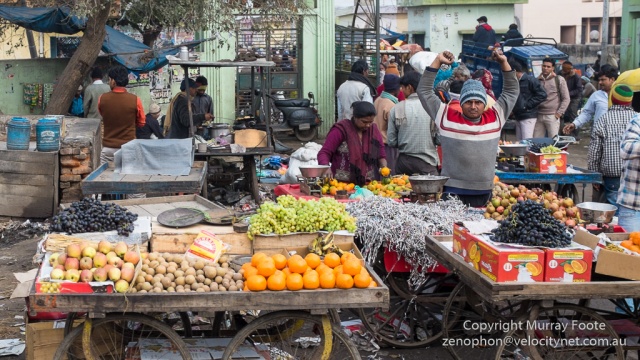
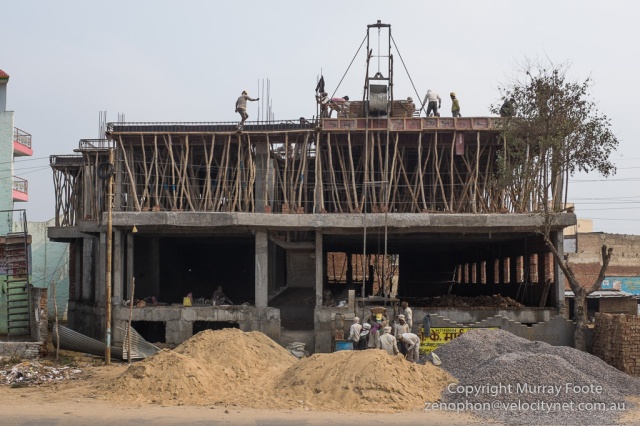
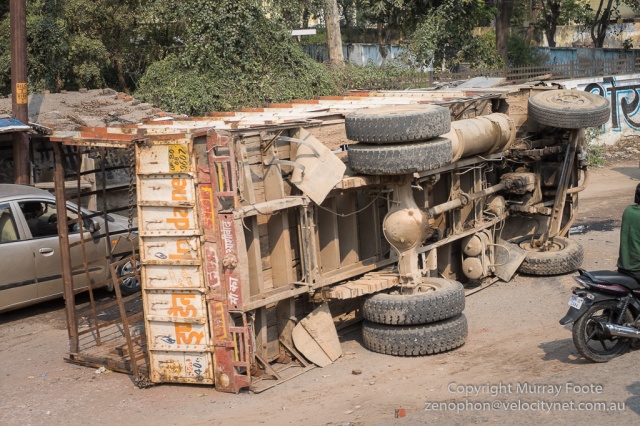
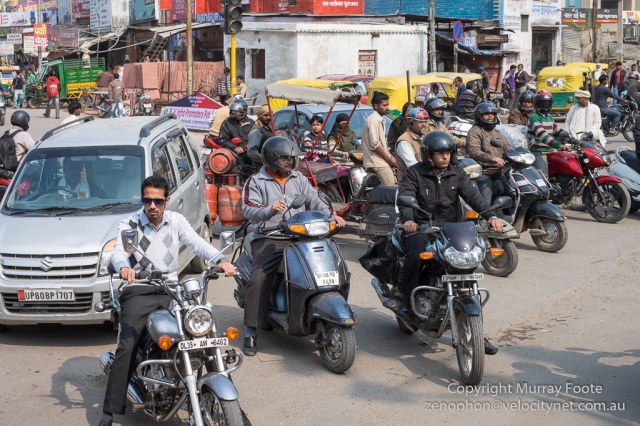

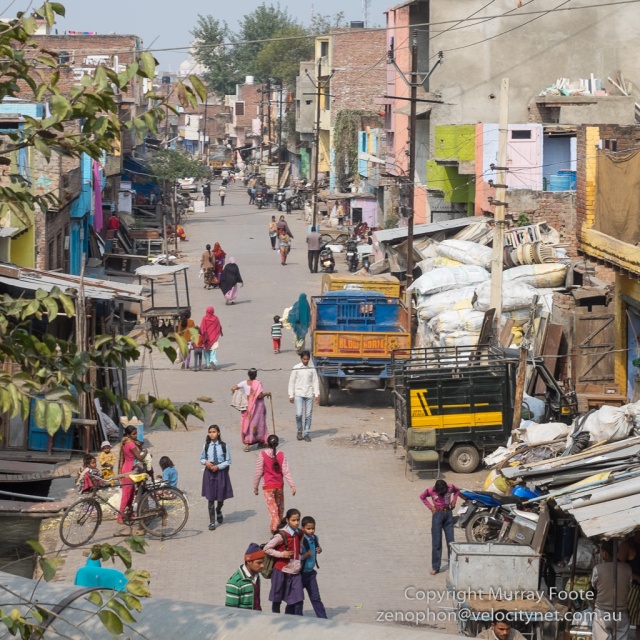
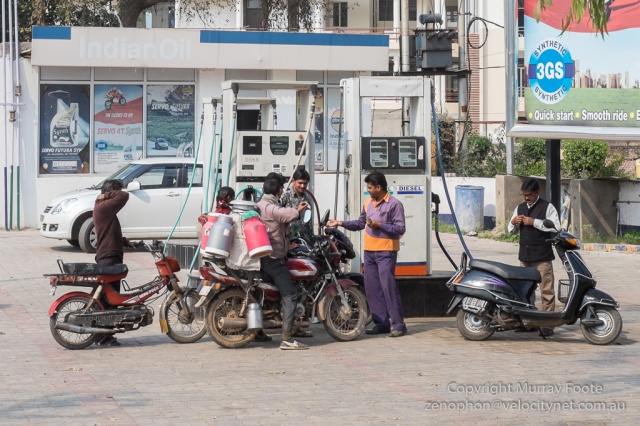
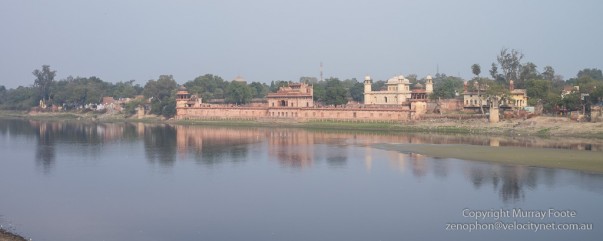

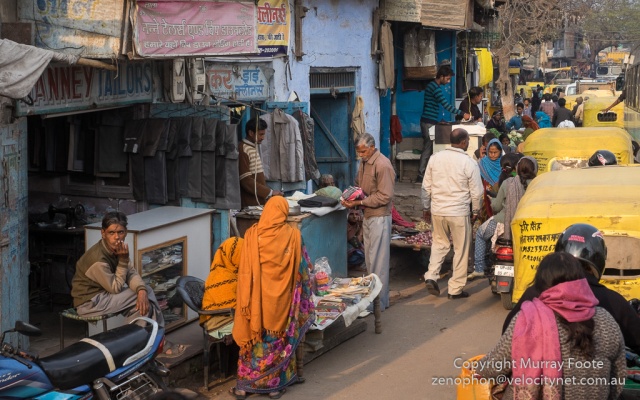

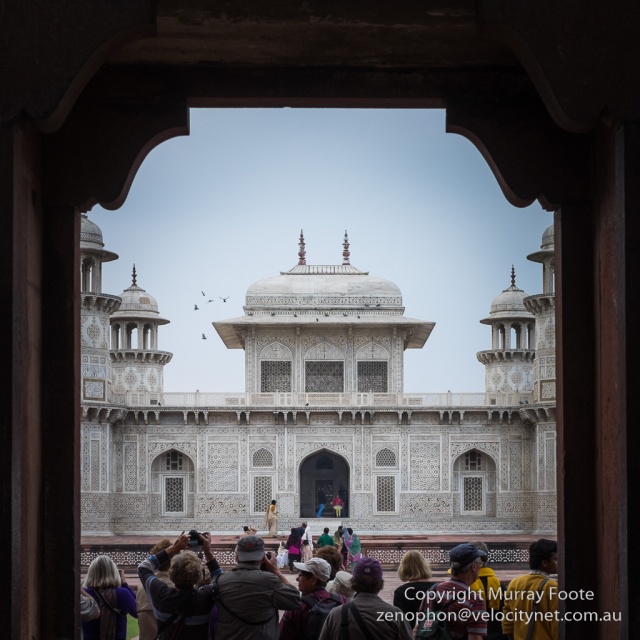
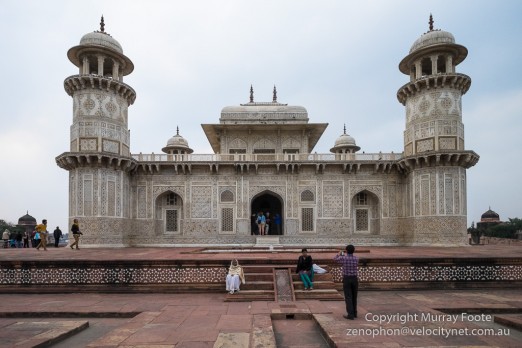
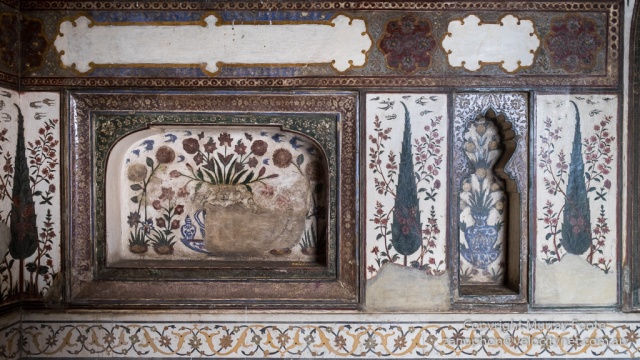

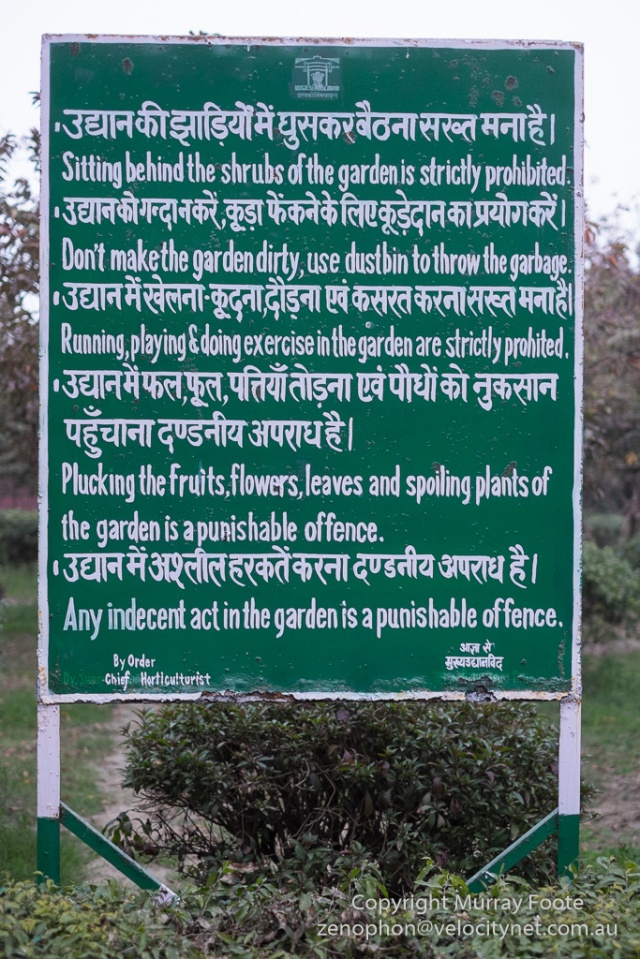
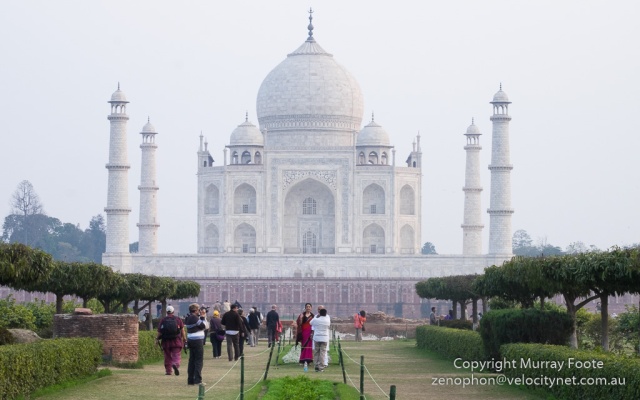

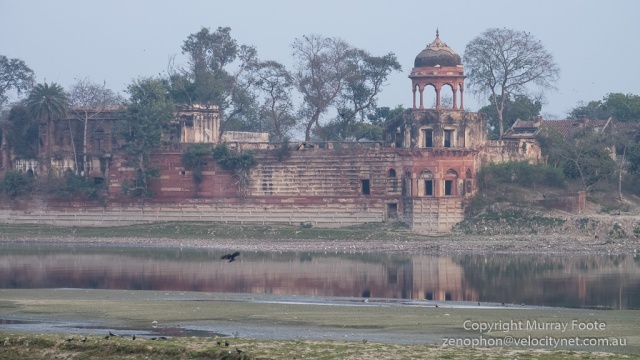
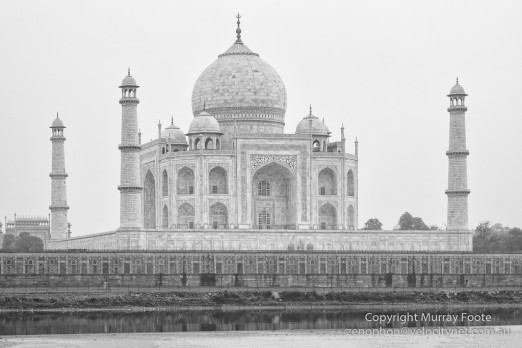
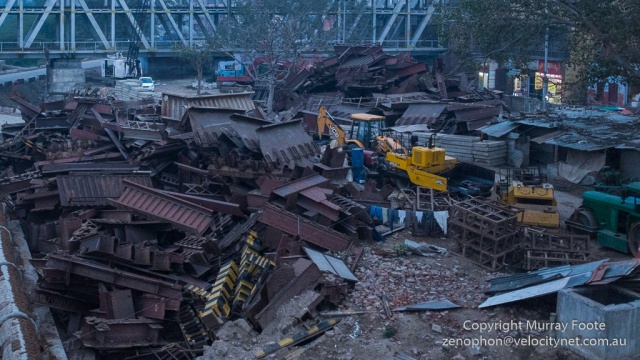
Great shots 🙂
LikeLike
Thanks very much 🙂
LikeLike
Wow – quite a history lesson there. People in power are often so horrible, aren’t they. But the architecture that survives them is quite something. Great photography with your interesting narrative, as ever.
LikeLike
Pingback: Itinerary of Trip to India « Murray Foote